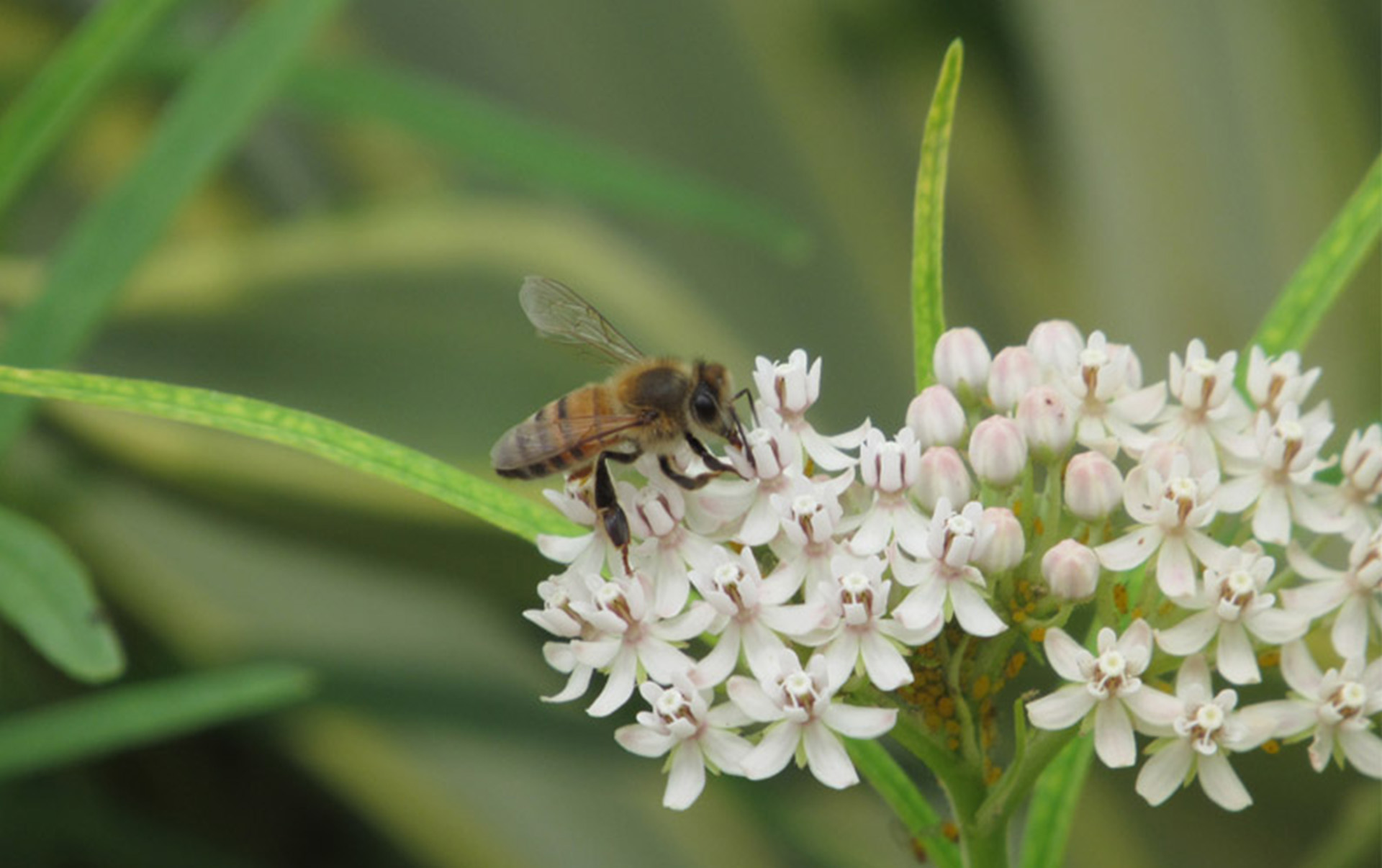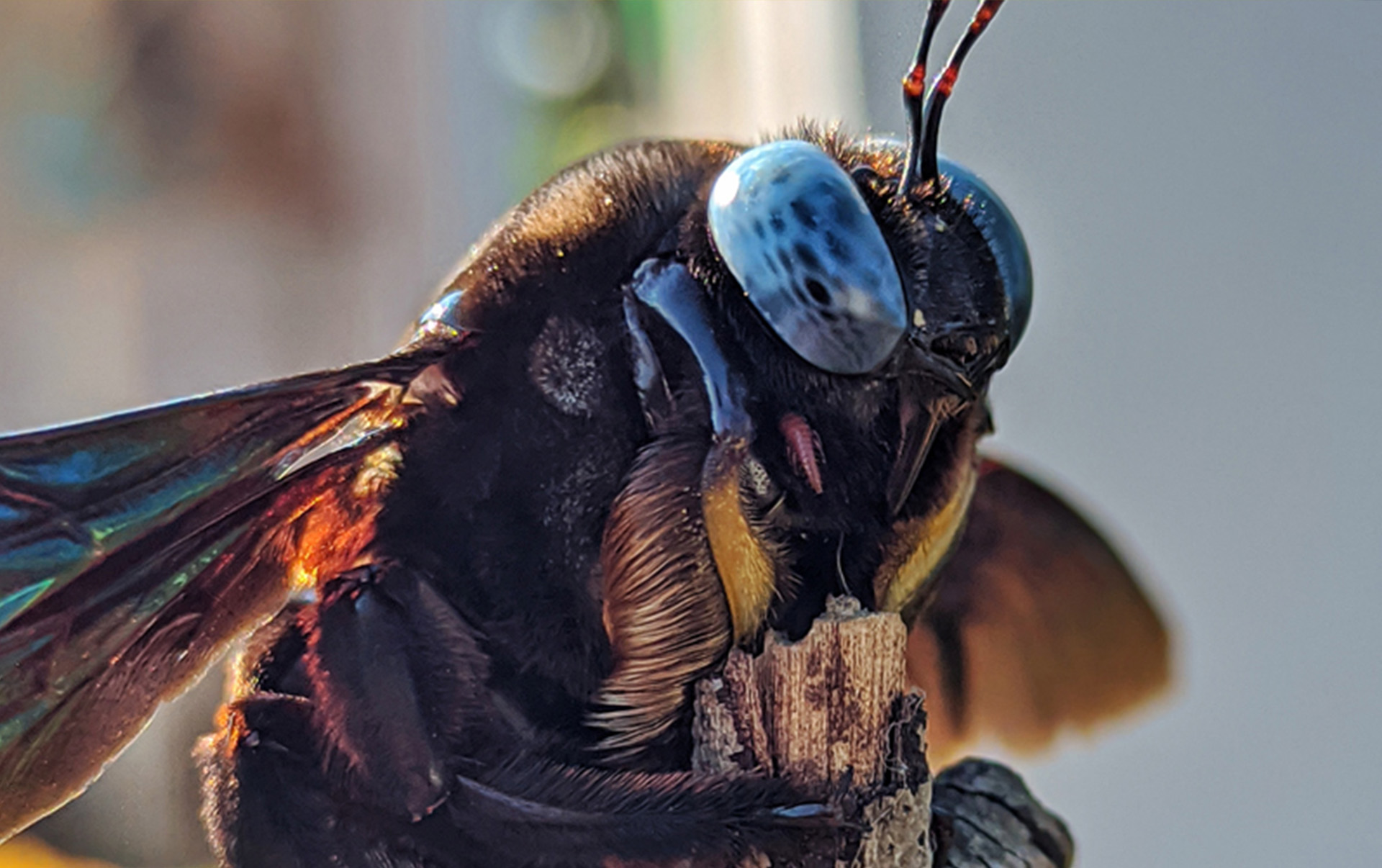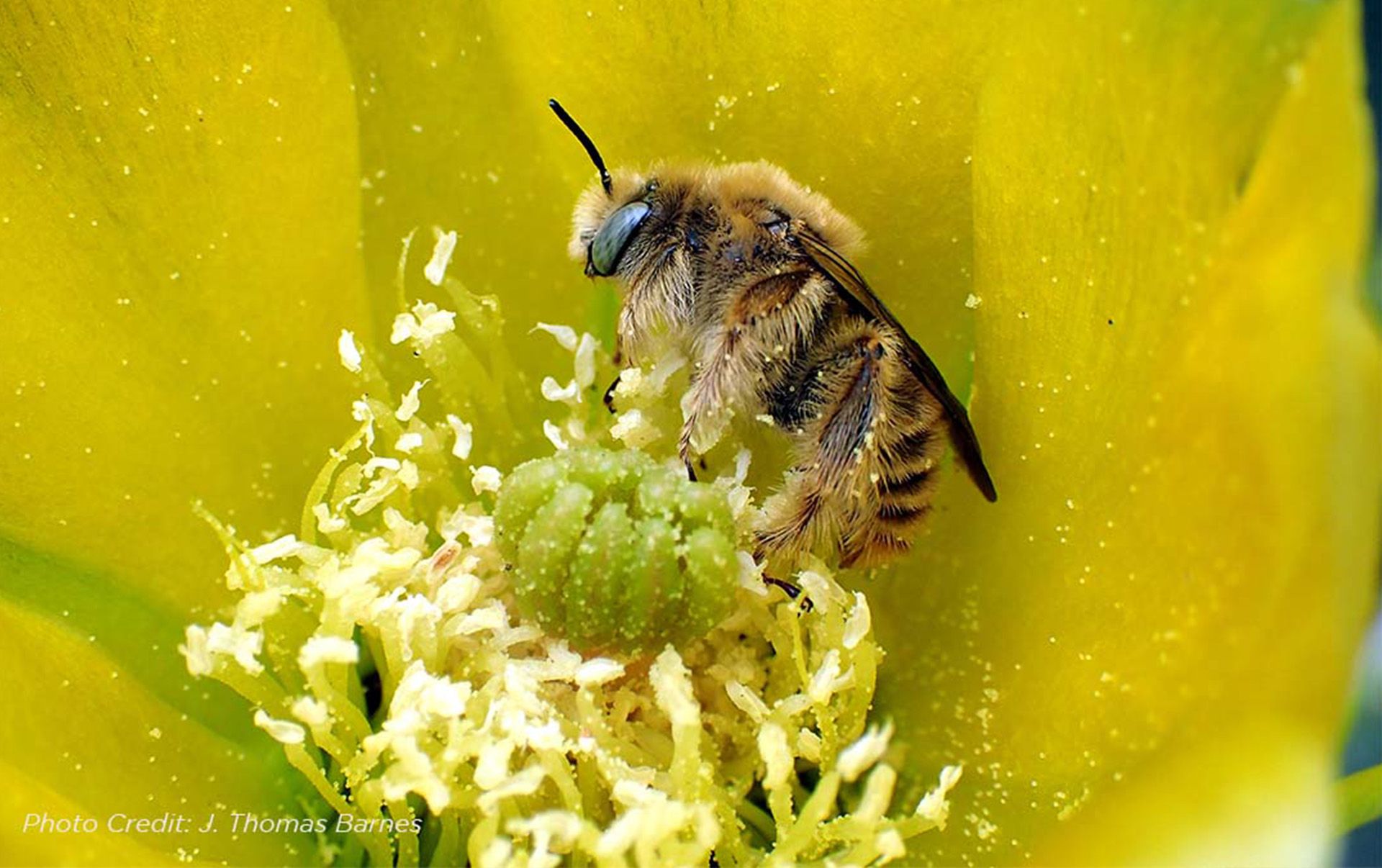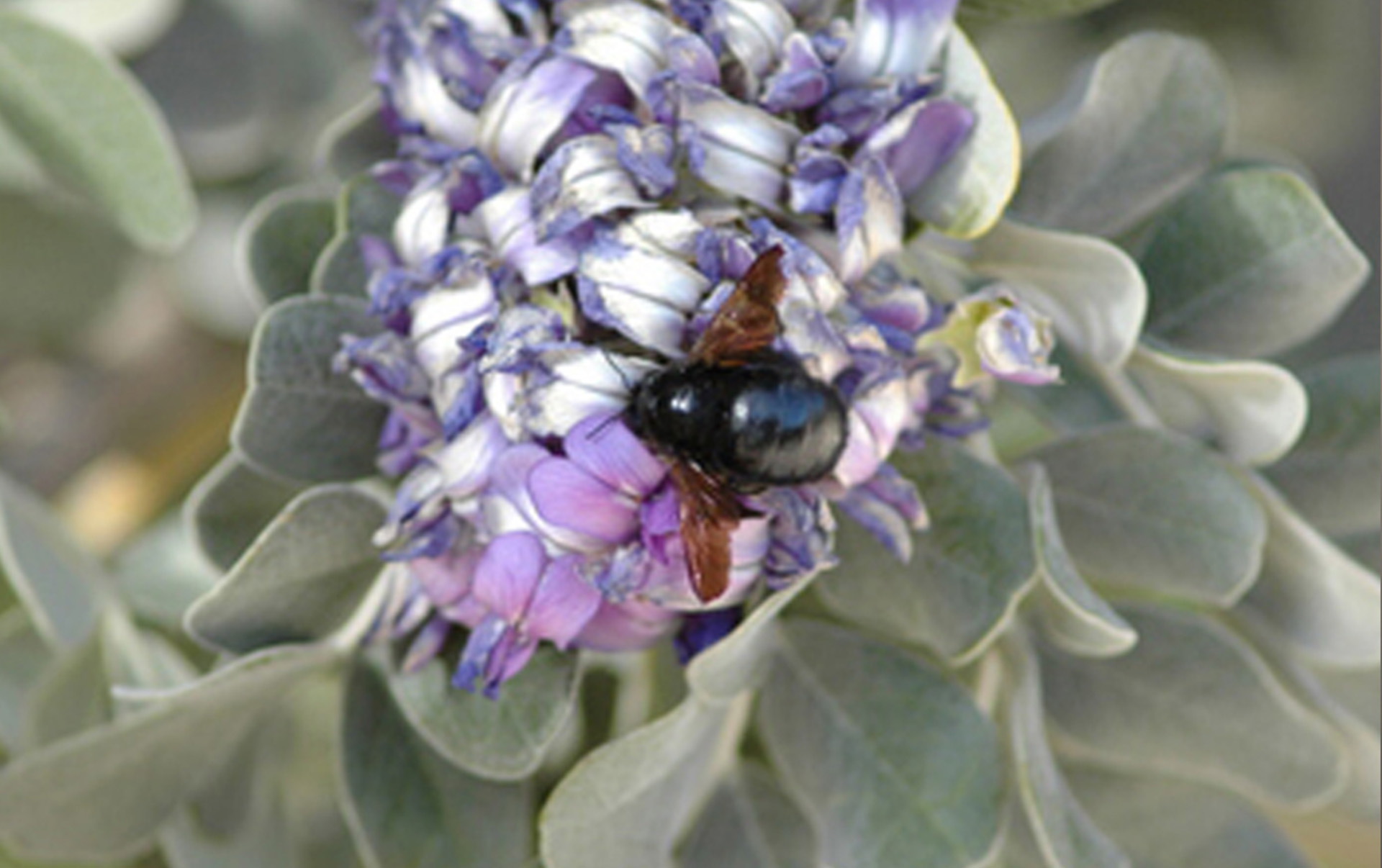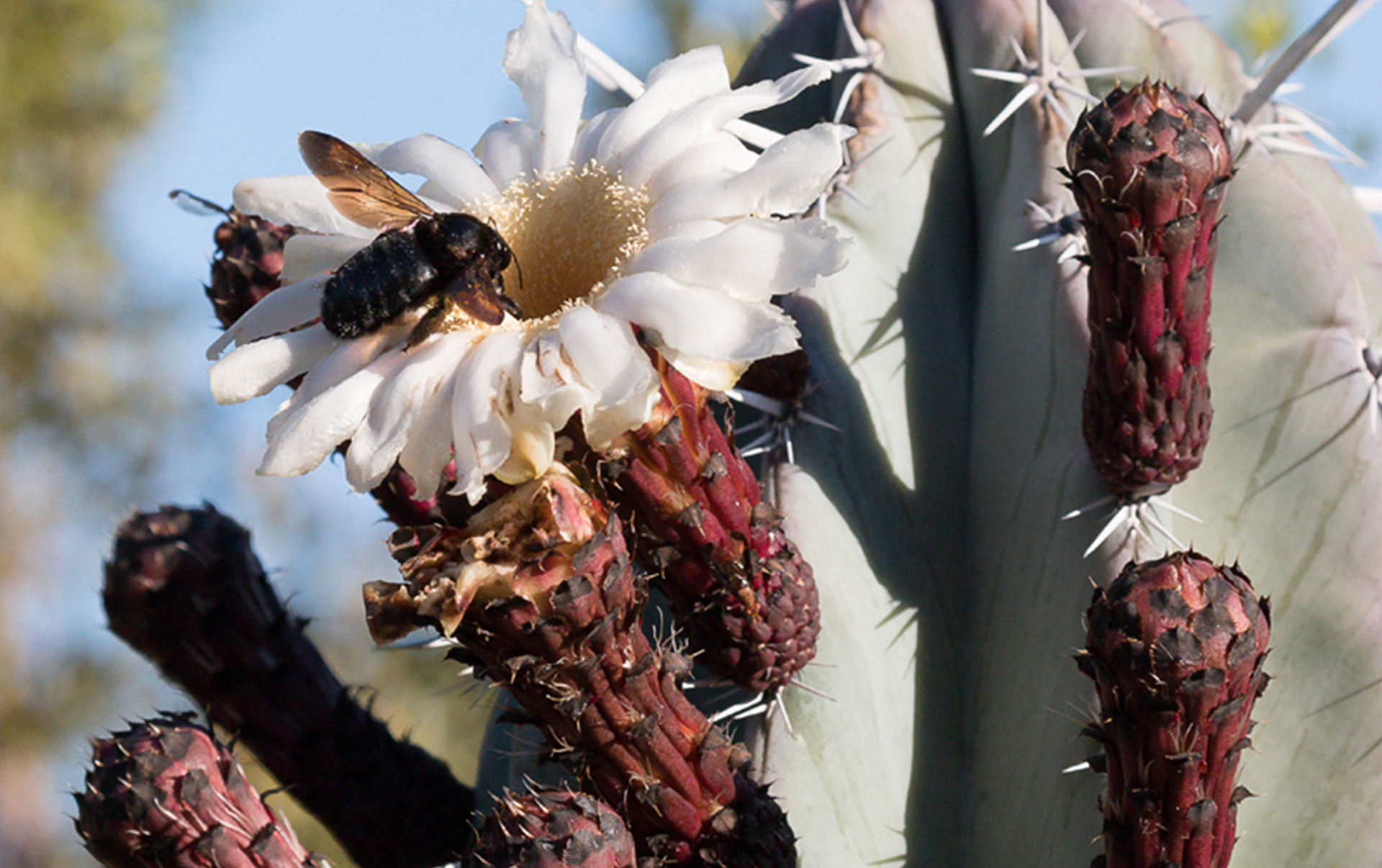Spring brings an astounding display of desert wildflowers thanks to behind-the-scenes contributions of winter rains and native bees. Flowers rely on bee pollinators to create seeds for the next season’s blooms. Native bees’ relationship with plants extends beyond pollinating, though. Nearly all native bees feed on pollen, nectar and oils of flowers. Many native bees are solitary and often make nests and brood cells by burrowing into the ground or using tunnels abandoned by other animals. Tunnels created by bees aerate soil, letting rain penetrate rapidly to get vital water to plant roots. Some bees depend on native plants, such as creosote and brittle bush, for resins that are used to seal nests formed inside dead branches. Leaf cutter bees protect their larva from microbial attack thanks to chemicals in leaves used to line brood cells.
Often mistaken for wasps or flies, native bees range in size from the world’s smallest bee that is less than 1/16th inch long, to as long as 1 ½ inches. However, many native bees look similar to the more familiar honey bees. How can you tell the difference? Entomologist, Maddie Ostwald observes that most native bees hold their legs up close to their bodies when they fly while legs of honey bees dangle below their bodies. Without native bees, we wouldn’t have the beauty of the desert!
Resources: A Natural History of the Sonoran Desert available in the Gift Shop; In a Desert Garden, Love and Death Among the Insects by John Alcock; Desert Plants and Desert Native Bees — A Potent Pollination Pairing! – Water Use It Wisely.

